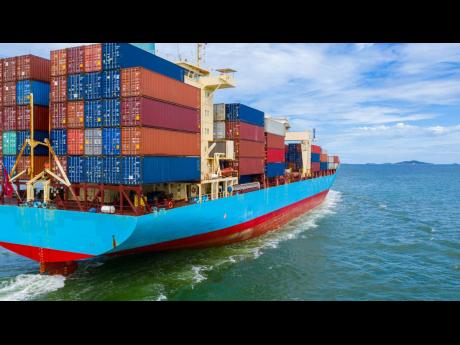How digitalisation will shape shipping
THE SHIPPING industry is a crucial component of the global economy, facilitating the transportation of goods across vast distances. Despite its importance, the shipping industry has been slow to adopt digital technologies, leading to inefficiencies, delays, and increased costs.
However, in recent years, there has been a push towards digitalisation in shipping, driven by advancements in technology and changing market demands.
Digitalisation in maritime and logistics is the integration of digital technologies into various aspects of the shipping process. This can include everything from automated cargo- handling systems to online booking platforms and real-time tracking and monitoring systems. The goal of digitalisation is to improve efficiency, reduce costs, and enhance the overall customer experience.
One area where digitalisation is having a significant impact is in the optimisation of shipping routes. Traditionally, shipping routes were planned based on experience and historical data, but today, digital tools can provide real-time information on factors such as weather patterns, ocean currents, and port congestion. This data can be used to optimise routes and reduce transit times, ultimately improving the efficiency of the entire supply chain.
Another area where digitalisation is transforming the shipping industry is in the automation of cargo handling. Automated systems can speed up loading and unloading times, reduce the risk of accidents, and improve the accuracy of inventory tracking. For example, automated cranes can lift and move containers more quickly and precisely than human operators, allowing for faster turnaround times at ports.
Real-time tracking and monitoring systems are also becoming increasingly common in the shipping industry. These systems use sensors and data analytics to provide real-time information on the location and condition of goods in transit. This information can be shared with customers and supply-chain partners, allowing for greater transparency and accountability throughout the shipping process.
Digitalisation is also leading to the development of new business models in the shipping industry. For example, digital platforms are emerging that connect shippers with carriers, allowing for more efficient and cost-effective shipping arrangements. These platforms can also provide value-added services such as insurance, financing, and customs clearance.
What’s more, digitalisation in shipping also helps to address some of the industry’s sustainability challenges. For example, automated cargo-handling systems can reduce energy consumption and emissions while real-time tracking and monitoring systems can help to prevent the loss or damage of goods in transit.
However, the digitalisation of the shipping industry is not without its challenges. One of the main challenges is the cost of implementing new technologies. Upgrading existing infrastructure and systems can be expensive, and many shipping companies may be reluctant to make significant investments without a clear return on investment.
Another challenge is the need for collaboration and standardisation. Digitalisation requires the sharing of data and information between different parties in the shipping process, and this can be difficult to achieve without standardised processes and protocols. Collaboration among shippers, carriers, and other stakeholders is essential to ensuring the successful implementation of digital technologies.
Cybersecurity also poses a significant challenge. As the shipping industry becomes increasingly reliant on digital technologies, it is also becoming more vulnerable to cyber threats. Shipping companies must invest in robust cybersecurity measures to protect their systems and data from cyber-attacks.
Digitalisation is transforming the shipping industry, providing opportunities to improve efficiency, reduce costs, and enhance the overall customer experience. However, there are also issues that remain to be addressed as greater implementation is encouraged. The challenges notwithstanding, the benefits of digitalisation in shipping are clear, and companies that embrace these technologies are likely to be better positioned for success in the rapidly evolving global marketplace.

